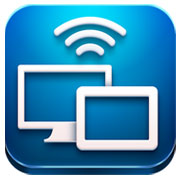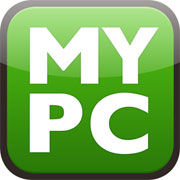
![]()
FlightPredictor,a mobile app from Gregstoll, is available for US$1.99 at Google Play. Gregstoll’s FlightPredictor app takes FlightCaster.com’s powerful flight prediction dataand wraps it into a mobile app, in this case, for Android — and what a great job Gregstoll, FlightCaster and its data supplier FlightStats have done.
Gregstoll’s FlightPredictor app takes FlightCaster.com’s powerful flight prediction dataand wraps it into a mobile app, in this case, for Android — and what a great job Gregstoll, FlightCaster and its data supplier FlightStats have done.
FlightPredictor for Android uses historical flight datagoing back 10 years, along with real-time conditions like in-bound airplane tracks,weather, and live information from FlightStats and the Federal Aviation Authority topredict flight delays.
Predictions are based on learning techniques and are generated by an algorithm. That datais then delivered to the app.
How It Differs
One of the ways FlightPredictor differs from the sometimes dubious airline-provided information isthat it relies heavily on delay factors, rather than simply whether there’s an aircraft at thegate or not.
Plus, its independence from the airline means you’re not subject to the airline’s ulteriormotive — that it may want you hanging around the gate so it can board youquickly, for example.
Algorithm Factors
Delay factors include inbound aircraft, departure airport status, arrival airport status,official airline status, departure weather and arrival weather.
Sources include Bureau of Transportation Statistics, FAA Air Traffic Control SystemCommand Center, FlightStats and the National Weather Service.
Based on all of these elements, including historical data, the algorithm can provide aprobability of delay based on a percentage.
For example, it can indicate that the predicted arrival status of a particular flight will beprobably delayed with percentages as follows: 3 percent probability of it being on time; 14 percentprobability that it will be less than an hour late; and 83 percent that it will be more than an hourlate.
In other words, even if the airline reckons you’re going to get to where you’re going ontime — you ain’t gonna.
In Use
I used the app on a recent flight from New York’s Kennedy into Los Angeles and wasimpressed by the flexibility of the app.
Early in the day, the app can show a flight as having, say, an 86 percent chanceof being on time even though the airline hasn’t posted the inbound aircraft. The app just uses whatever data is available to make the prediction. As more data comes online, it throws numbers into the equation, providing more accurate predictions.
What’s really interesting is that the app and its data focus on real life — not an airline’sdelusional prediction of real life. For example, FlightPredictor ignores an airline’s Walter Mitty-likefantasist’s assumption that once you’re on the plane and the doors are shut, you’re going to take offand be on time. We all know that is often not the case due to ground delays.
I can’t count the number of times I’ve heard the cockpit optimistically announce anon-time arrival subject to air traffic delays — only for there to indeed be air traffic delays.What a surprise.
User Interface
The app screen is messy and could use a UI cleanup. However, it does contain massiveamounts of at-a-glance data: flight number; departure gate; arrival gate;predicted arrival status; official airline-reported status of estimated departure andestimated arrival — including the number of minutes that the airline estimates theflight to be late; and delay factors like inbound aircraft, FAA alerts and weatherfor the departure and arrival airport — and so on. Great Stuff.
Bonus features include 30 airport maps and a sharing function where you can sendflight prediction reports by email — to a family member, say.
Unfortunately, the app only works with U.S. domestic flights.
In Conclusion
Over the years I’ve spent countless hours — probably adding up to days out of mylife — hanging around airport departure screens, being thrown the occasional tidbit ofinformation from arrogant airlines. It’s only been in the last few years that live gate and boarding information have beenavailable to mobile users.
Throw apps like FlightPredictor into the mix, and everything changes. Power to thePeople!



















































